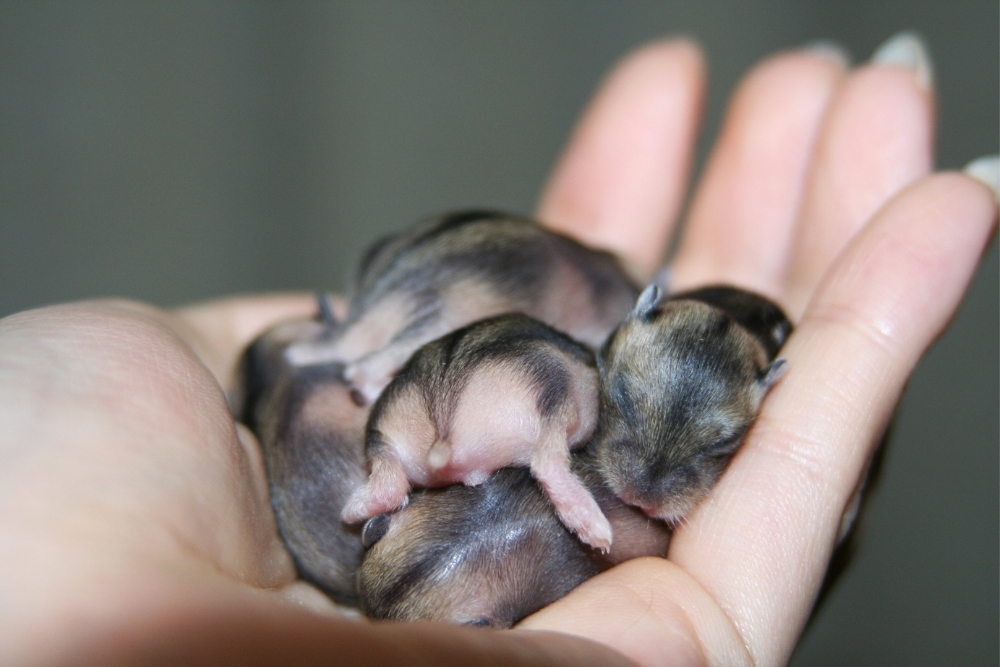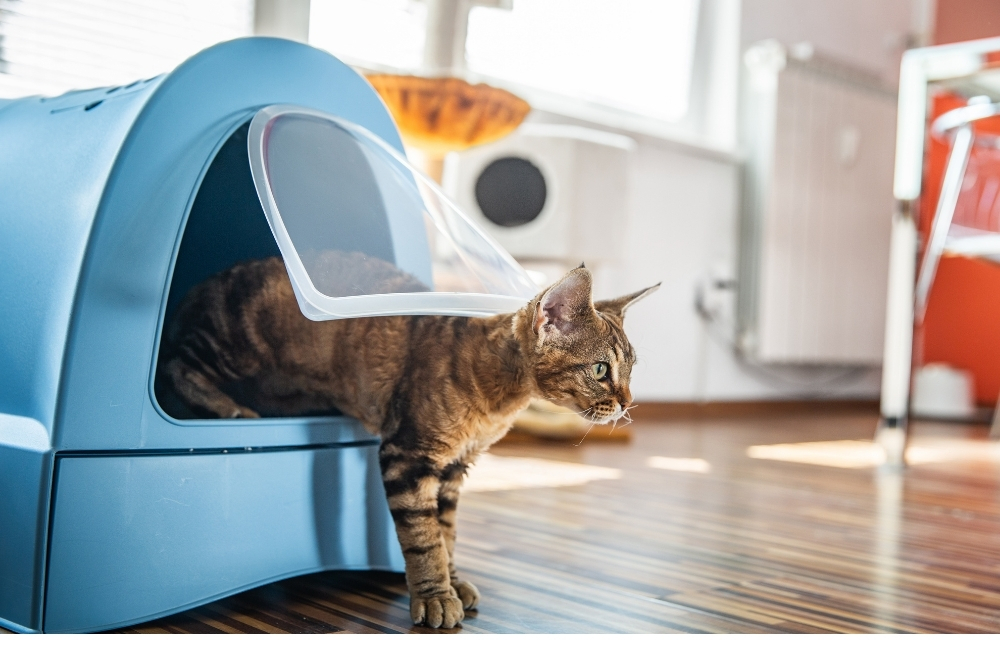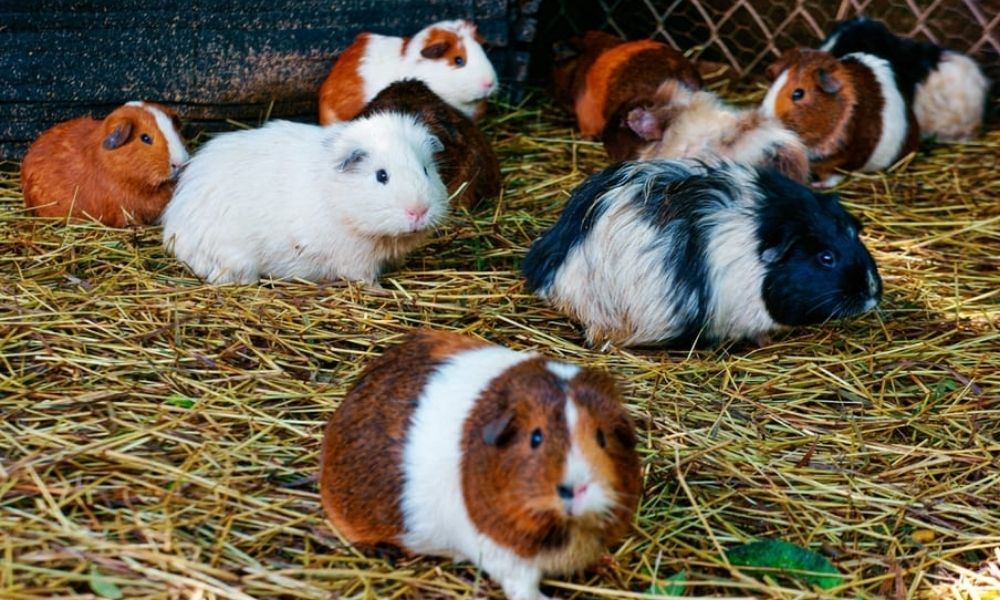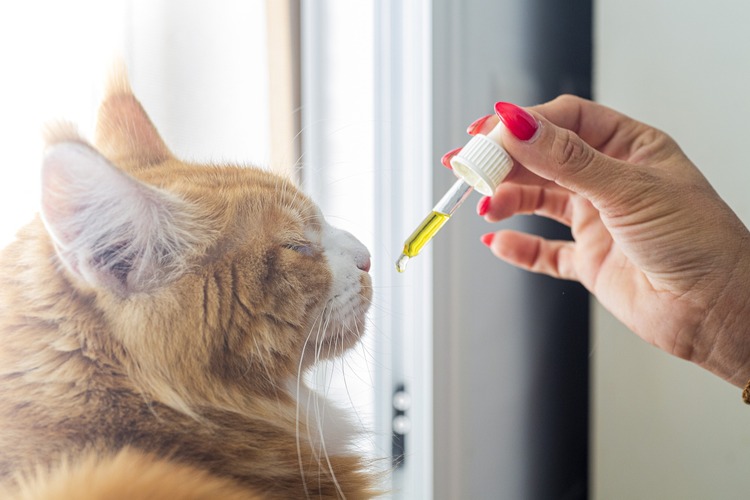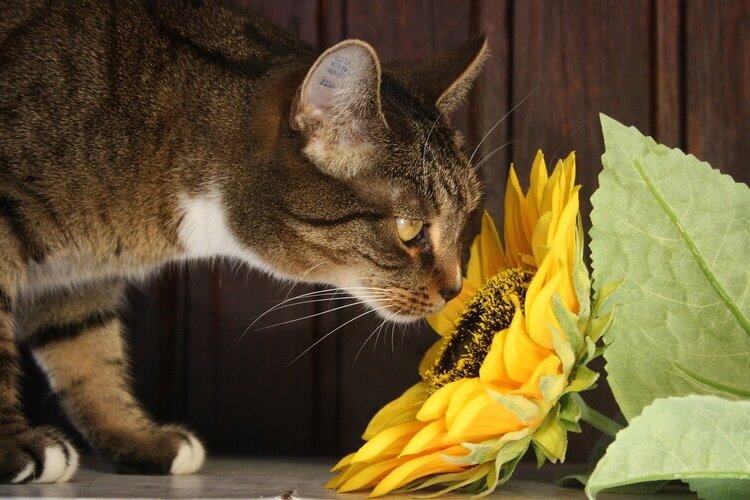Hamsters make great pets for us as they bring pleasure and create certain bonds with your family. They are sensitive creatures but at times female hamsters can act in a cruel way. A mother hamster will eat her babies after birth for reasons we might not understand. To better understand this concept we need to know factors that might motivate this occurrence.
A female hamster who kills her young ones is guided by instinct and certain reasons. She might be doing it for what she perceives as the good of the overall brood. Mother hamsters are never afraid of making sacrifices for the good of the litter so do not be quick to judge just yet.
Even if you do your best to keep the mother safe, warm, well-fed, and stress-free, she might still choose to eat some of her babies. It could also be accidental, like when the mother bites down too hard on the baby while trying to pick him up. She might store her baby in her cheeks and suddenly move forgetting they were there. It sounds horrible when animals get clumsy but it happens.
Many times when the mother decides eating her young is an option, there is not much you can do. But 90% of the time you prevent this from happening by not putting the mother hamster in a position where she thinks she needs to eat them.
Related: 6 Ways to Tell if a Hamster is Pregnant
Reasons Why Hamsters Eat Their Babies
Here are important factors to note down that could be major reasons behind such killings:
1. Lack of food
When a hamster mother is pregnant you have to provide her with adequate food. She should be well fed and cared for. However, if she lacks enough food after giving birth, they might be forced to consume the young ones to compensate for the missing nutrients.
Inadequate food will make a mother see that supplies are not enough to sustain the brood so she will result in killing her babies. This is a mercy response instinctively ingrained in her so that her babies do not die from starvation and dehydration. The family will feed on the killed hamster for a few days. However, you can avoid this by making sure there is plenty of water and food.
2. Stress, fear, and anxiety
Stress is usually the main cause of a mother hamster eating her newborns. Constantly checking on her will aggravate her more. Once you notice the mother is approaching her due date (18-22 days after mating), start giving her more food than usual and bedding and nesting material as well. They will find the most hidden corner or use her hideout to give birth and you must leave her alone during this time. Do not poke her or the cage, talk to talk or try to interact with the babies. Keep her warm and well-fed and make sure she has plenty of quiet without any disturbance.
During birth, there is a lot of stress especially if it is her first pregnancy. The demands of her babies can exceed her expectations increasing stress and anxiety levels. It is normal for a hamster mom to be twitchy and on edge when pregnant. If the stress becomes too much the mother will consume the babies.
Anxiety and fear are also increased by the behavior of the owners, including those who take pictures of the puppies and act excited around the cage. You should limit all visits to the mother’s room because this will increase the stress. People who visited the pets less reported a significant stress reduction in the mother hamster. The best way to handle it is to give her and the litter plenty of alone time.
What a pregnant hamster wants is a peaceful, quiet, and serene environment. Hamsters that live in excessive noise and disturbance will take this as a threat to their babies. Flashes from cameras will also increase this fear. If your house also has other pets like cats and dogs keep the hamster far from them. They could provide unnecessary interruption to the peace and quiet your hamster needs.
3. Small cage
Spaces matter a lot when it comes to what pregnant hamsters need. Small cages can make your hamster nervous and force her to kill her babies. The absolute minimum requirement for a hamster cage is 24 by 12 inches and about 12 inches tall. Those requirements are necessary for a Syrian hamster and dwarf hamster as well.
When you first put your hamster in the cage she was happy and excited because it was big enough just for her. Now that a new family is coming in she might find it as small. Remember a hamster mother gives birth to up to 20 new litter babies. She might be pushed into cannibalism in a quest to create more space for herself and the remaining babies. Please get your hamster a new bigger cage that will prevent this from happening.
Hamster cages less than 450 square inches are dangerous for them. You can make modifications in the cage by adding tubes and additional compartments for the babies. Do not disturb the mother or cage for at least 2 weeks after giving birth.
4. Scent mixup
A mother hamster uses scent more than humans do. In this case, she will use it to identify which babies are her own. Never touch a newborn baby with your bare hands. Your fingertips will leave your scent on the baby’s body which the mother will pick up on. Her instinct will drive her to eat the babies with different scents because she views them as threats. Make sure you do not hold the baby hamsters for at least a couple of weeks so their scent remains pure and the mother can develop a bond with the babies.
5. Inability to care for many babies
If the hamster is blessed with a huge litter of puppies it will react in two ways. For new and inexperienced mothers they might choose to eat some puppies to reduce the litter and increase their chances of survival. The large family requires time and attention to care for and attend to. By reducing the family size, she can manage them in a better way.
The other reaction by an experienced one is to take care of all her litter puppies. You will notice the mother has weaned them when she pushes them away after they try to nurse from her. In this period make sure you provide her cage with even more food since the babies need adult food.
6. Presence of a male
Hamster fathers are not nurturing and will not tolerate the babies for long. In fact, they will try to get the mother’s attention and might eat or hurt the babies in the process. Separate the two immediately because he might eat the babies just because he is starving. Other times he might see it as increased competition in mating partners. Pregnant hamsters should be separated as soon as you spot the signs.
7. Omnivorous
Feeding your hamster meat might make him develop a taste for meat. Thus they will eat their young and this is why you should never feed them meat. Cooked meat is still meat, keep that in mind. If you notice your hamster has given birth overnight, bring her some protein. This is the food that will help her regain her strength immediately. You can try egg white or cooked plain chicken that is good for your hamster.
You can leave her pieces of chicken every evening until she gives birth if you want but it’s best to not give her something that will leave a nasty smell on the bedding right before she gives birth. She might get confused as to which one is chicken and which is her baby.
8. Survival of the fittest
Charles Darwin was onto something when he said nature will pick who to survive and who will not. A mother will eat all the weak puppies because she can already guess that they will not survive. She will decide that such babies are not going to do well in the future and are going to die anyway, so why not kill them right away.
If you notice any hamster baby with a physical disability you can carefully separate it from the family. Remember to be careful so as not to touch other babies in the process and contaminate them with your scent. The aim is to have a healthy and strong litter.
9. Innate cannibalism
Rodent mothers are not the most careful mothers compared to other mothers such as cats or dogs. All animals can eat or kill their young if they suspect something is wrong with them. In other animals like rodents the mothers simply just eat the litter after a few days.
You will notice babies keep disappearing little by little. Animals are controlled by instincts more than humans. If they see that an offspring is a danger to them and the rest of the family, they eat it or kill it. This is driven by the struggle to make the rest of the litter safe to ensure survival.
10. Self-preservation
For experienced mothers, they might eat older babies, just because they pose a threat to them. Sometimes this is motivated by the presence of little food. The mothers might get worried about them eating all the food.
It is also possible that the mother is sick during the child’s birthing process. This makes her crave additional nutrients in her body. In this crucial moment, she will feel compelled to eat one of her young ones to give her an extra amount of energy and nutrients.
More: 9 Effective Tips to Get Rid of Litter Box Smell
Here is a video of a hamster eating its babies. Video courtesy: Maila Lagria.
How to prevent hamsters from eating their babies
Some of the measures you can take to prevent hamsters from eating their babies include:
1. Provide a larger cage
Once you notice that your hamster is pregnant, get a larger cage for her. A bigger cage will make her feel comfortable and confident as there is enough space for a big family. You should move the male hamster to the smaller cage to stop him from cannibalism aggression towards the newborn hamsters.
2. Provide enough food and water
Give your female hamster enough food she can stuff as much as she likes. She will always stash some food in her nest at normal times. Give plenty of nuts and seeds that can not rot.
3. Minimize visits to the cage
Although you will be excited about the new puppies, you should limit how often you visit the cage. We suggest you use a webcam if you want to monitor how the babies are doing. Decreasing disturbances and visits to the cage will encourage the mother hamster to feed her babies well.
Frequently Asked Question (FAQs)
Let’s now have a look at some of the most frequently asked questions on why female hamsters eat their babies.
Between a male and a female hamster who generally eats their young?
Both actually do especially if you have them in one cage. One way to prevent this is moving the male to a different cage. You can even keep him in the same room but not in one cage. The next step is to ensure the mother has a nice comfortable place to raise her young. Keeping your hamster in a dark place or a dimly lighted area will cause them to get stressed.
My hamster is eating babies, what do I Do?
Once you see the mother eating a baby the best thing to do is give plenty of extra food. Make sure food is always plenty and sufficient enough in the cage. Always remember that young hamsters can not survive without getting breast milk. Thus do not move them to another cage because once your scent gets on them they might be eaten. The cage could be small or the litter too big for her to be able to care for.
When can I touch the baby hamsters?
The litter should be left alone for the first 15 days or much longer. Never touch them before that as it will scent mixup. Once they get older you might want to move them to a different cage, especially when they start eating solid food. Older mothers are notorious for eating babies who they see are a competition. This happens after 21-28 days.
Should I remove a dead baby hamster from the cage?
If the hamster baby dies naturally or was mistakenly suffocated in her cheek sacks the mother will eat it. You might see her transport and move the baby around in her cheek pouches. Never move the dead hamster baby if there is a presence of newborns still in the cage.
What other species eat their babies?
Eating young ones is common in rats, mice, gerbils, guinea pigs, and the like. Noise, disturbances, and sounds they deem threatening and scary will make them eat their young. Ensure you prevent this from happening by providing a quiet environment. Do not hover around the cage as this will also make them nervous.

